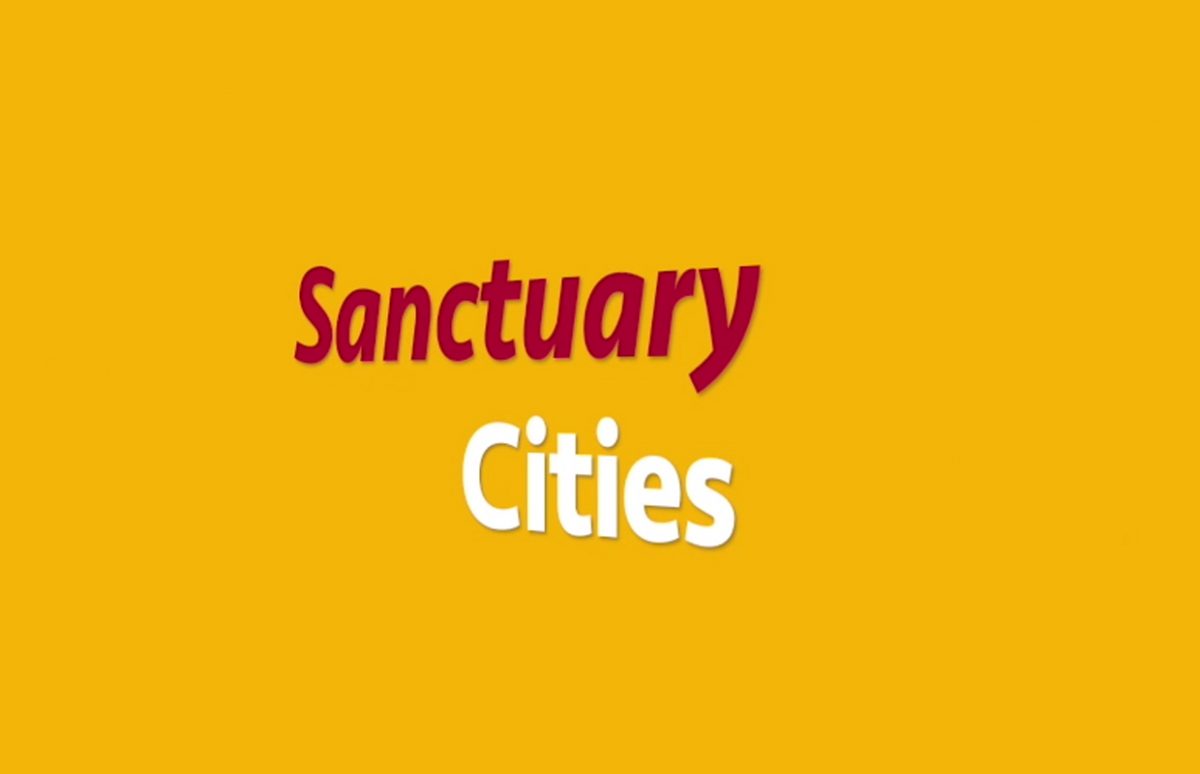The term "sanctuary city" is used frequently in coverage of immigration issues in the U.S.A. What does it mean and what is the size of the phenomenon?
The term is generally used to refer to cities, counties or even entire states which refuse to cooperate with the federal Immigration and Customs Enforcement agency (ICE). ICE requests that if police departments arrest someone even for a minor misdemeanor, and that person turns out to be an illegal immigrant, they be kept in custody until ICE can collect them for deportation. However that can mean detaining someone without a warrant, which leaves the police department open to legal action itself.
The concept of sanctuary was first used in this context in the 1980s, when churches across the Southern states decided to offer a safe haven to people fleeing brutal regimes and civil wars in Central America. The churches referred to the tradition of religious sanctuary in medieval Europe, when individuals could claim sanctuary in church buildings and were protected from law enforcement as long as they stayed on holy ground.
After 9/11, the New Sanctuary movement revived the previous movement's methods, protesting aggressive anti-immigration policies adopted after the terrorist attacks. It also began as a faith-based movement, but soon cities and other jurisdictions started adopting sanctuary orders of different types. Police chiefs and mayors often cite legal issues – they don't want to infringe immigrants rights by detaining them illegally.
How Big a Phenomenon is It?
It’s difficult to obtain statistics on the number of sanctuary jurisdictions, in part because legislation varies so much.
The Immigrant Legal Resource Center, which works with immigrants, considers that at least 633 counties have sanctuary policies.
According to The New York Times, five states have sanctuary policies: Vermont, Oregon, Connecticut, Rhode Island and California, which has been in the vanguard of the movement. Los Angeles has had a sanctuary policy since 1979, San Francisco since 1989.
In testimony to congress in 2015 ICE Director Sarah Saldaña identified over 200 state and local jurisdictions that refused to respond to ICE detention requests. That was before the arrival at the White House of Donald Trump, whose anti-immigration policies have been met by more jurisdictions adopting sanctuary policies.
Prison City?
The BBC news site recently published a poignant interview with a young woman in El Paso, near the Mexican border in Texas headlined "My Life Trapped in an American City". The anonymous student explains that she arrived in the U.S. from Mexico as a child with her family. Although her parents have now managed to obtain legal resident status, the interviewee and her two sisters are illegal immigrants. The interviewee is studying at El Paso University, but she can't leave the city, since it is surrounded by checkpoints where documentation is checked. El Paso appears to be the opposite of a sanctuary city, more of a fortress city.
Tag(s) : "Donald Trump" "immigration" "migration" "Sanctuary Cities" "U.S. politics" "U.S.A." "word of the moment"





